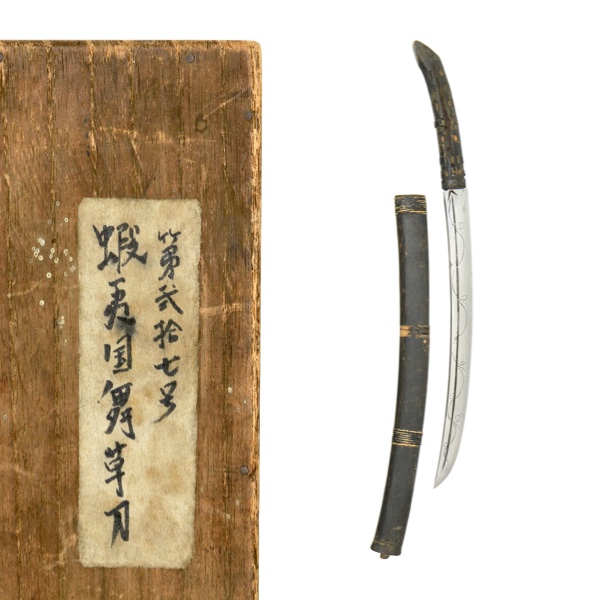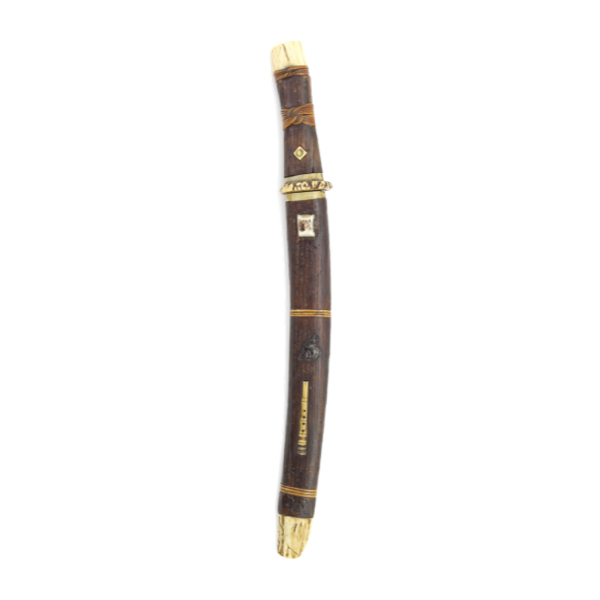
Ainu dagger
Called kuttom-ushbe in the local language. This one mounted in deer antler mounts.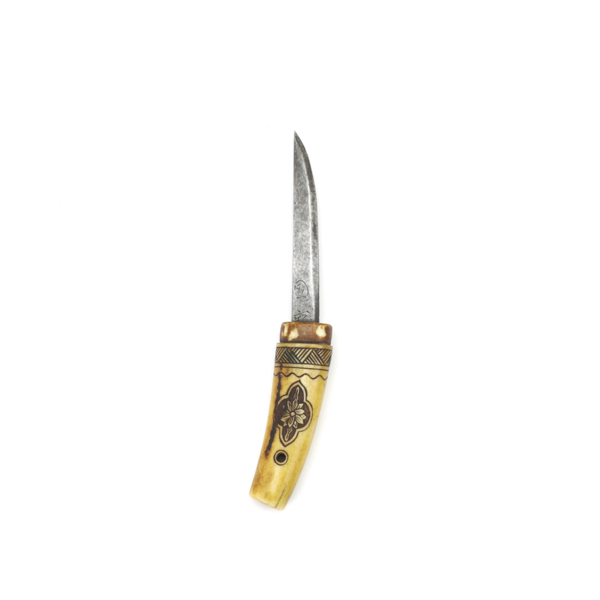
Miniature Ainu makiri
Despite its size it is of remarkably fine workmanship.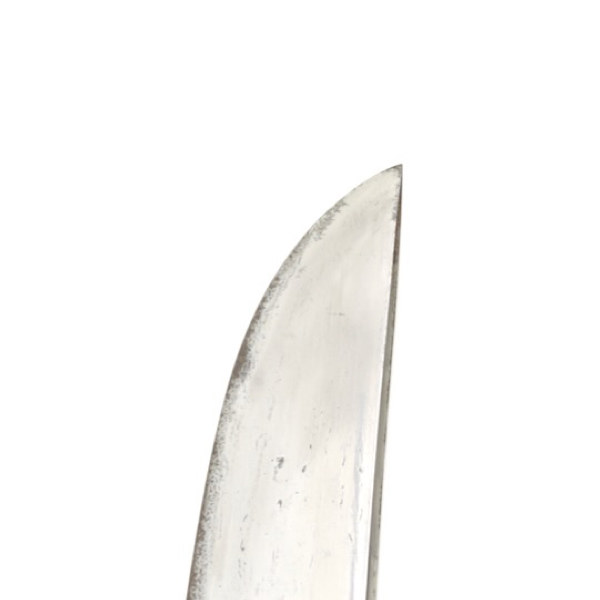
Kanetuhu / Etuhu
Ainu words for the point of a knife or sword.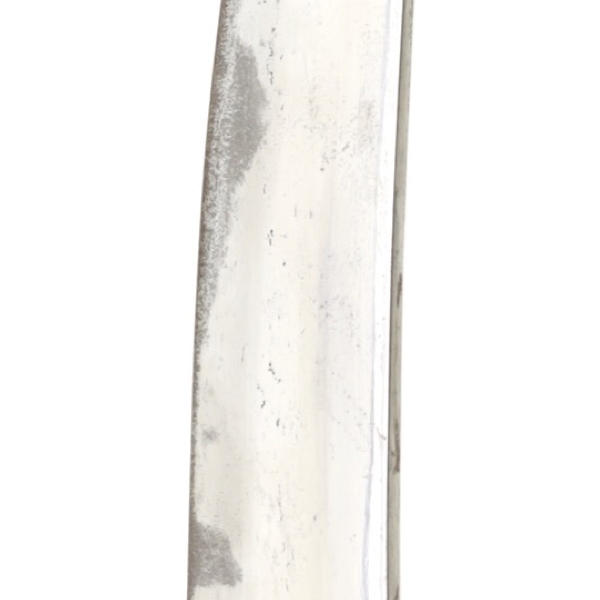
Notak
Ainu word for the edge of a sharp tool like a knife.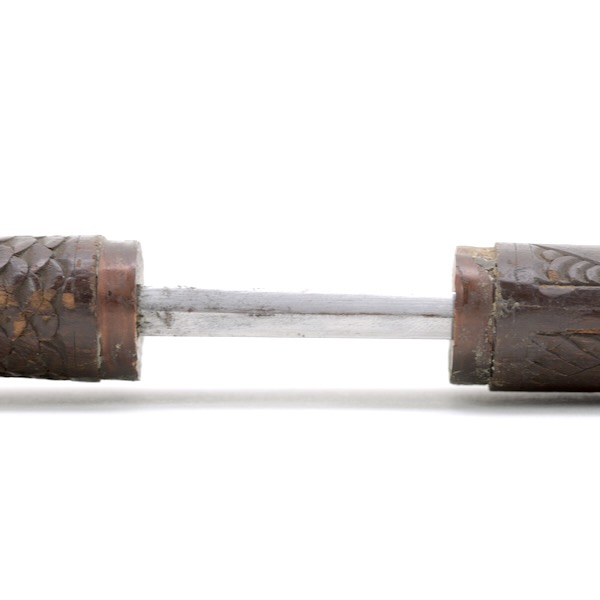
Mekkashike
Ainu word for the back of a knife, or sword. Also the ridge of a mountain or house.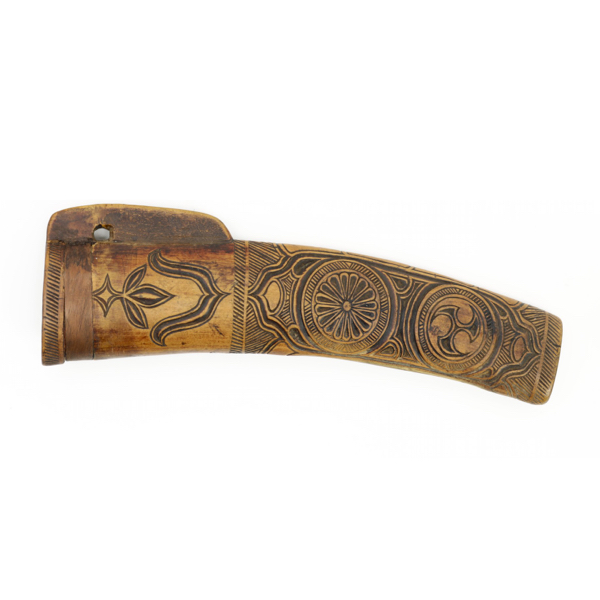
Makiri-saya
Ainu word for the scabbard of a utility knife called makiri.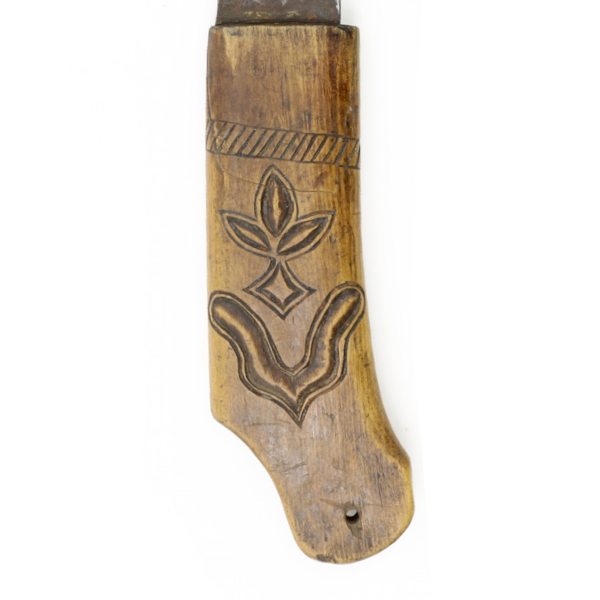
Makiri-nip
Ainu word for a knife handle.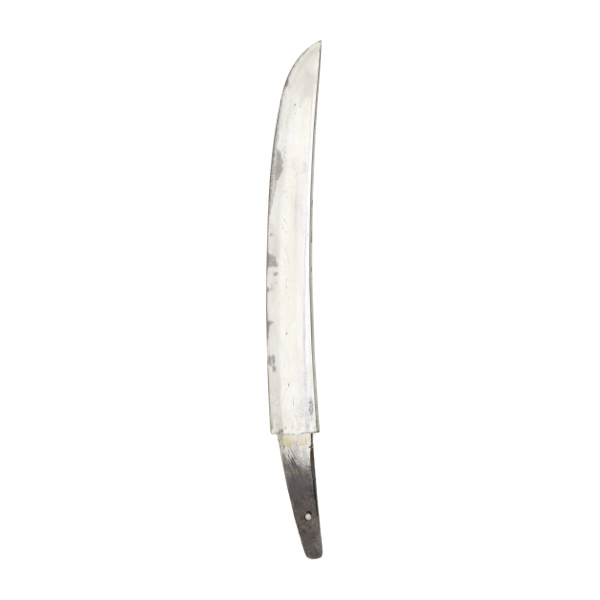
Ibehe
Ibehe is an Ainu word for a knife or sword blade.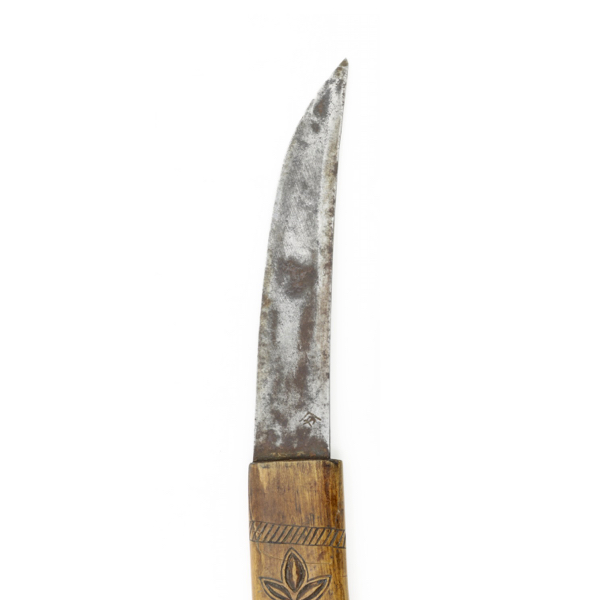
Makiri-ibe
Ainu word for knife blade.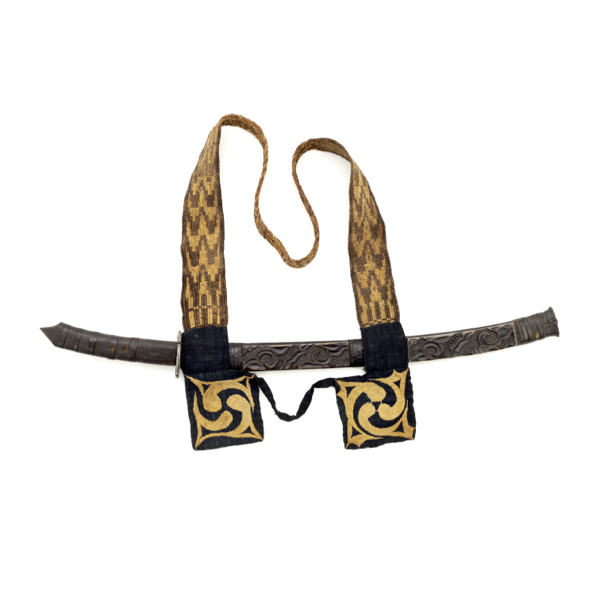
Ainu sword with sash
With deeply carved scabbard, complete with fine guard embroidered sash.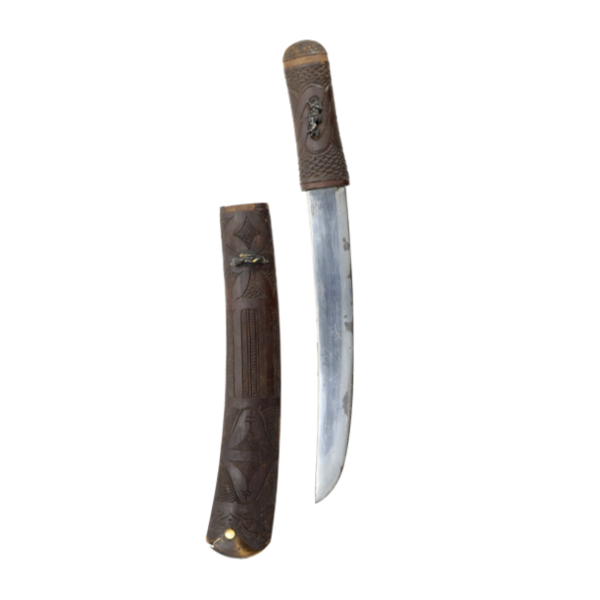
Rare Ainu kuttom-ushbe
A luxury Ainu knife styled after the Japanese tantō.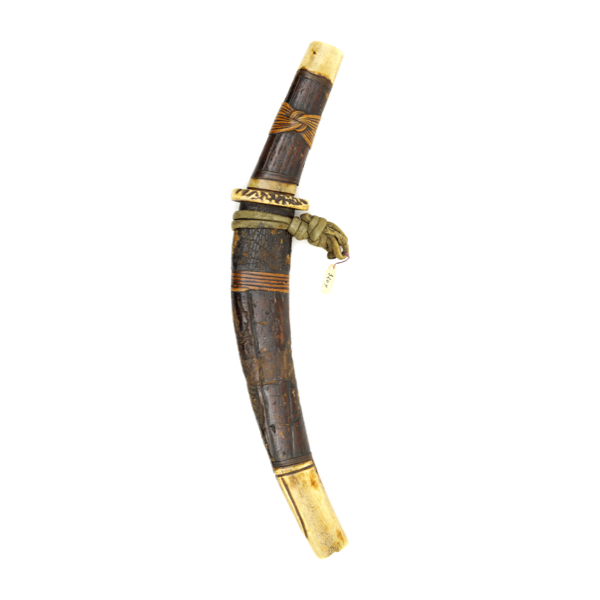
Unusual Ainu knife
Resembling a makiri but with the blade's edge on the opposite side.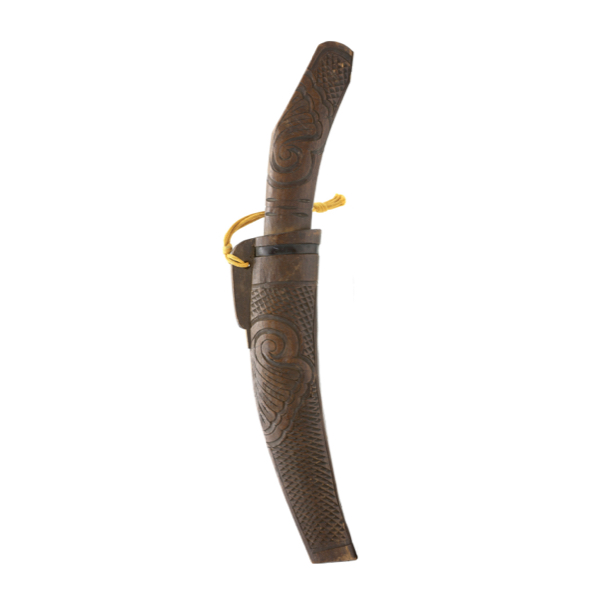
Ainu knife
Of a typical style used in Hokkaido in the 19th century.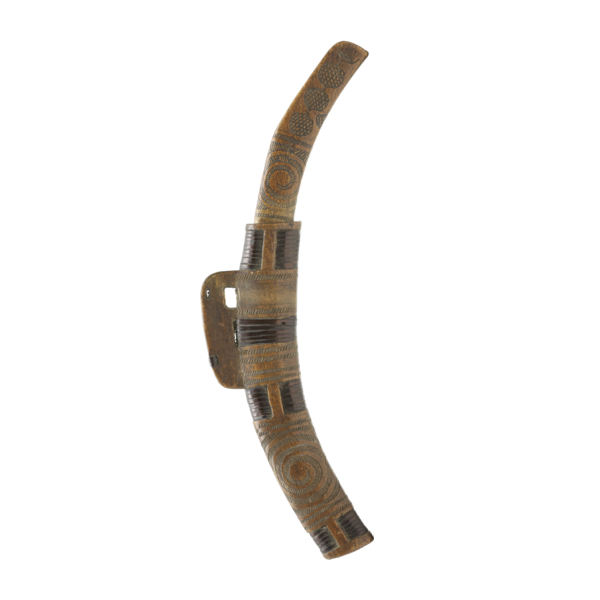
Bark wrapped Ainu makiri
A slender makiri with a bark wrapped scabbard.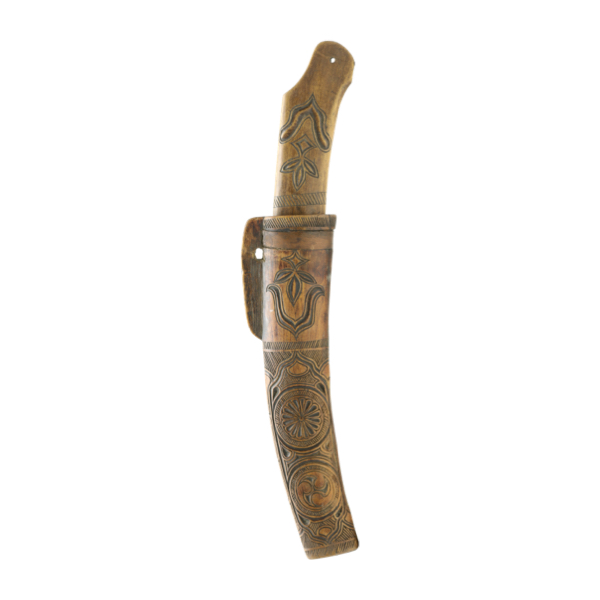
Fine Ainu makiri
An exceptionally well-carved Ainu knife.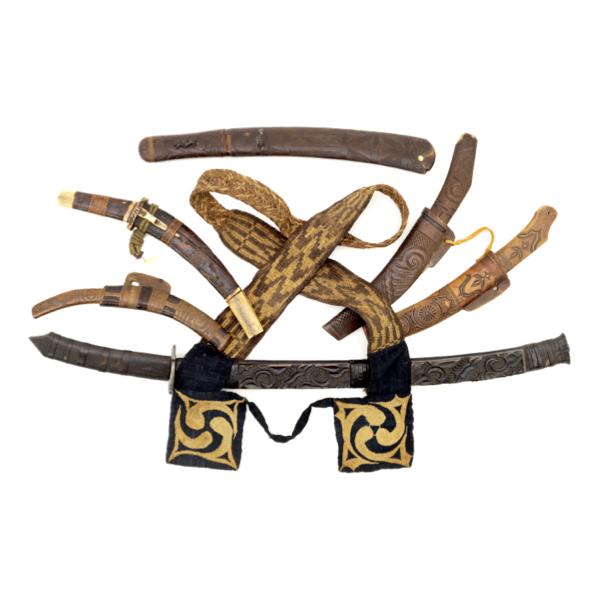
Knives and swords of the Ainu
19th-century ethnographers noticed that they had no iron production and relied solely on trade for articles like knives and swords. However, archaeologists found iron working facilities in 1988 and 1990.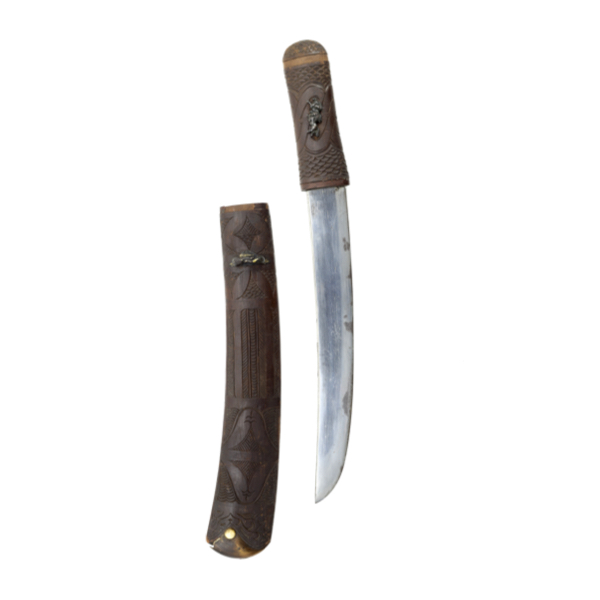
Kuttom-ushbe
Ainu word for a long knife worn in the belt.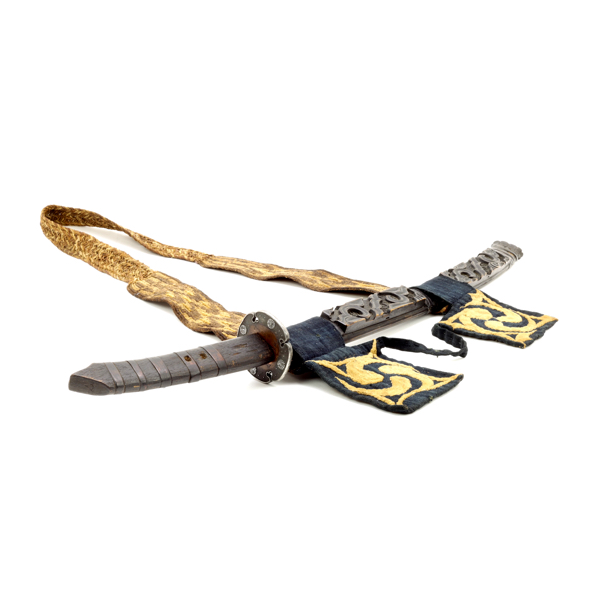
Emushi
Ainu word for sword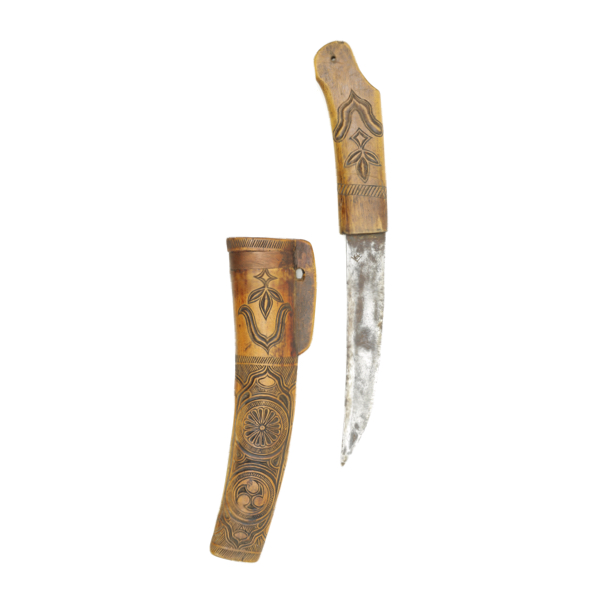
Makiri
Ainu word for a knife.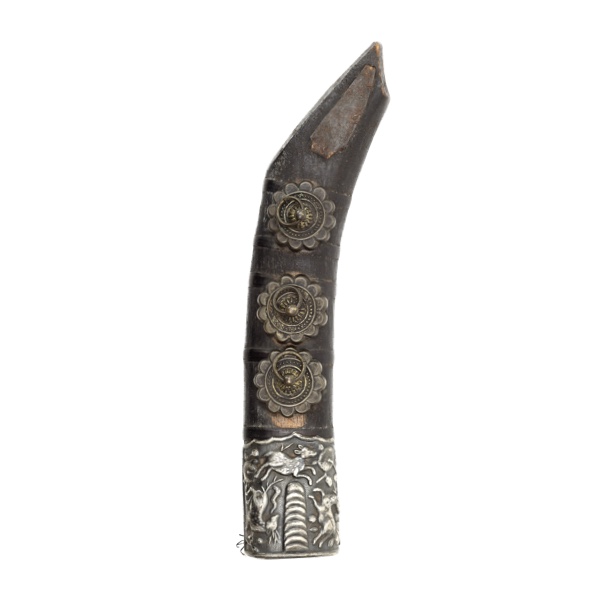
Ainu sword hilt
Made of wood, with a silver ornamental fitting of remarkable workmanship.